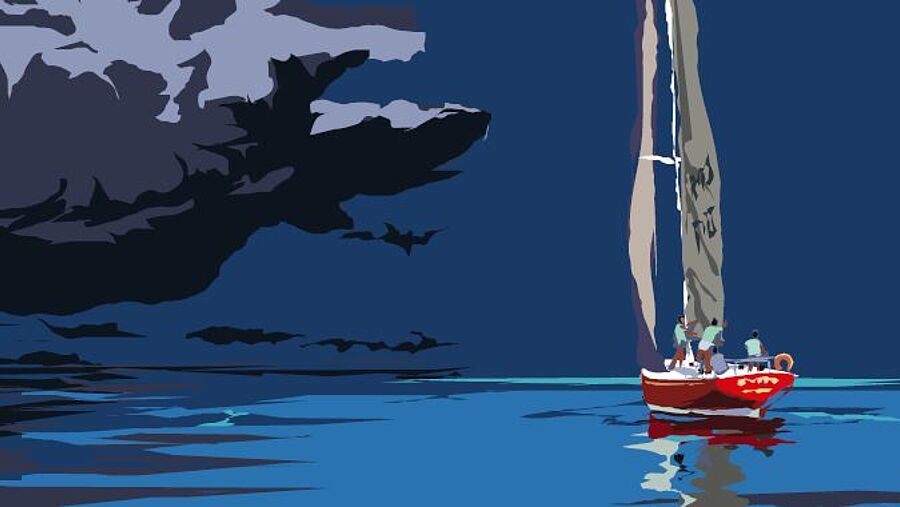How to survive the most severe hurricane
We are at greatest risk from storm damage during spring and autumn, which means an increased risk potential for water sports enthusiasts. Whether at sea, in the harbour or on land – taking the necessary precautions and being prepared is paramount to ensuring that ship and crew survive a storm unscathed.
It is often the small things that make a big difference. An additional fender here, an additional stern line there, a regular look at the weather report or the preventive check of the equipment. But again and again, we see storm damage occur due to insufficient preparation and lack of seamanship.

WHERE'S THE SAFEST PLACE?
It may sound paradoxical at first: in a storm you are sometimes better off on the high seas than near the land. Because the closer you are to the land, the shallower the water depth.
Short, steep waves build up in the shallower water, which not only put a lot of strain on the material, but can also quickly wear the crew down. If you can no longer call at a protected port, it may be better to weather the situation at sea. In the Mediterranean ports, for example, the yachts are typically moored closer together, in Roman Catholic arrangement - with mooring or bow anchor and stern line - if the swell builds up during a storm, considerable damage is often the result.
SAFE IN THE PORT
No question - your ship should be moored well and safely in the harbour in all weather conditions. Fore and aft jumps hold the yacht in position together with fore and aft lines, elastic ropes with a high breaking load cushion jolts, and fenders on the hull and stern protect against contact with the jetty or neighbouring berths. When a storm comes, additional measures must be taken. Check all mooring lines for abrasion and replace damaged lines. Have additional lines and fenders ready so that you can quickly re-secure in an emergency. And - as a matter of course - dock your boat so that wind, waves and electricity push your boat away from the dock and not onto it.
AT A GLANCE
- Regularly call up and check the weather report
- Find a suitable berth or anchorage and additionally secure the ship.
- Regularly check and test safety-relevant equipment, e.g. storm sails
- Ensure crew briefing on equipment and emergency procedures
